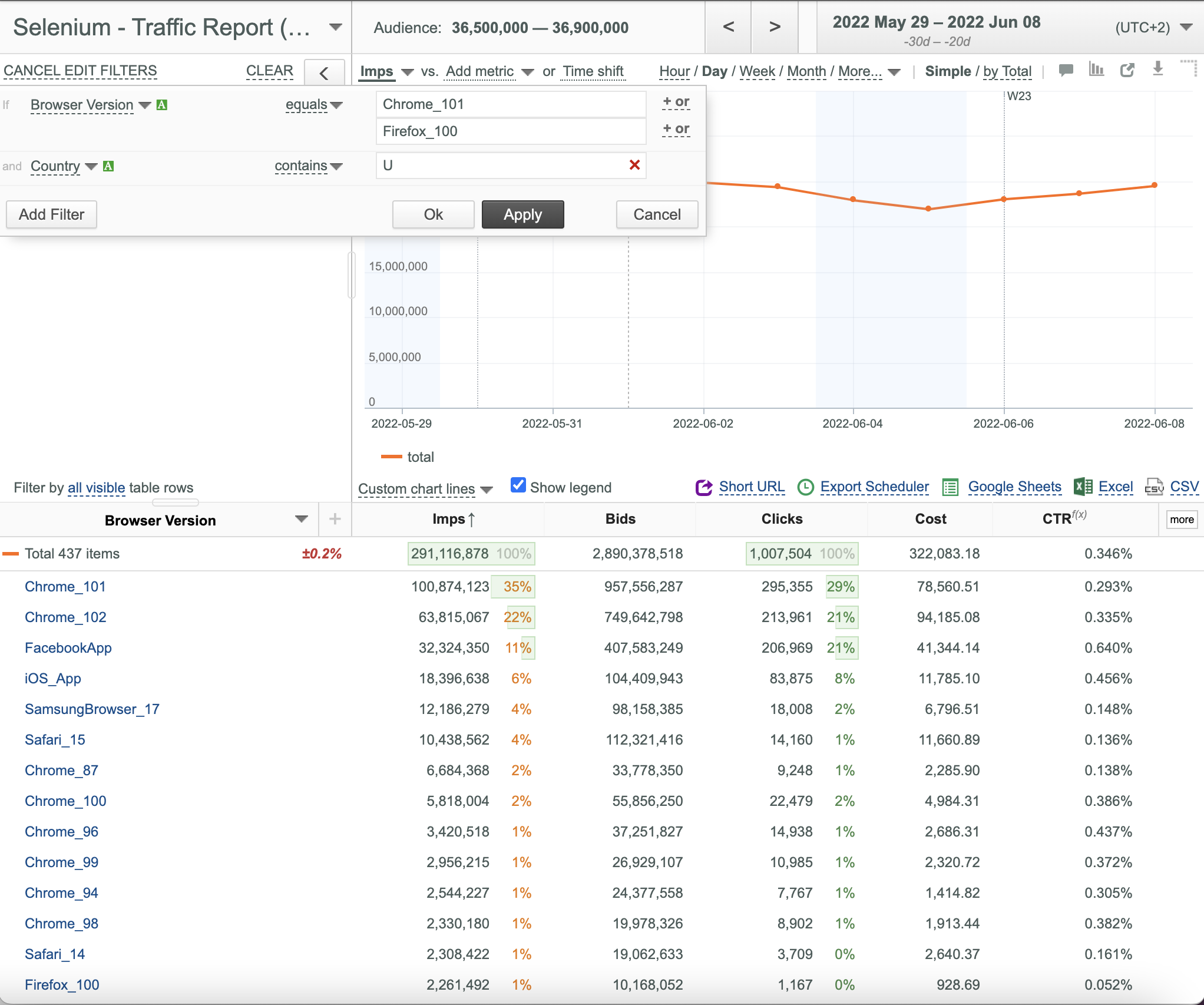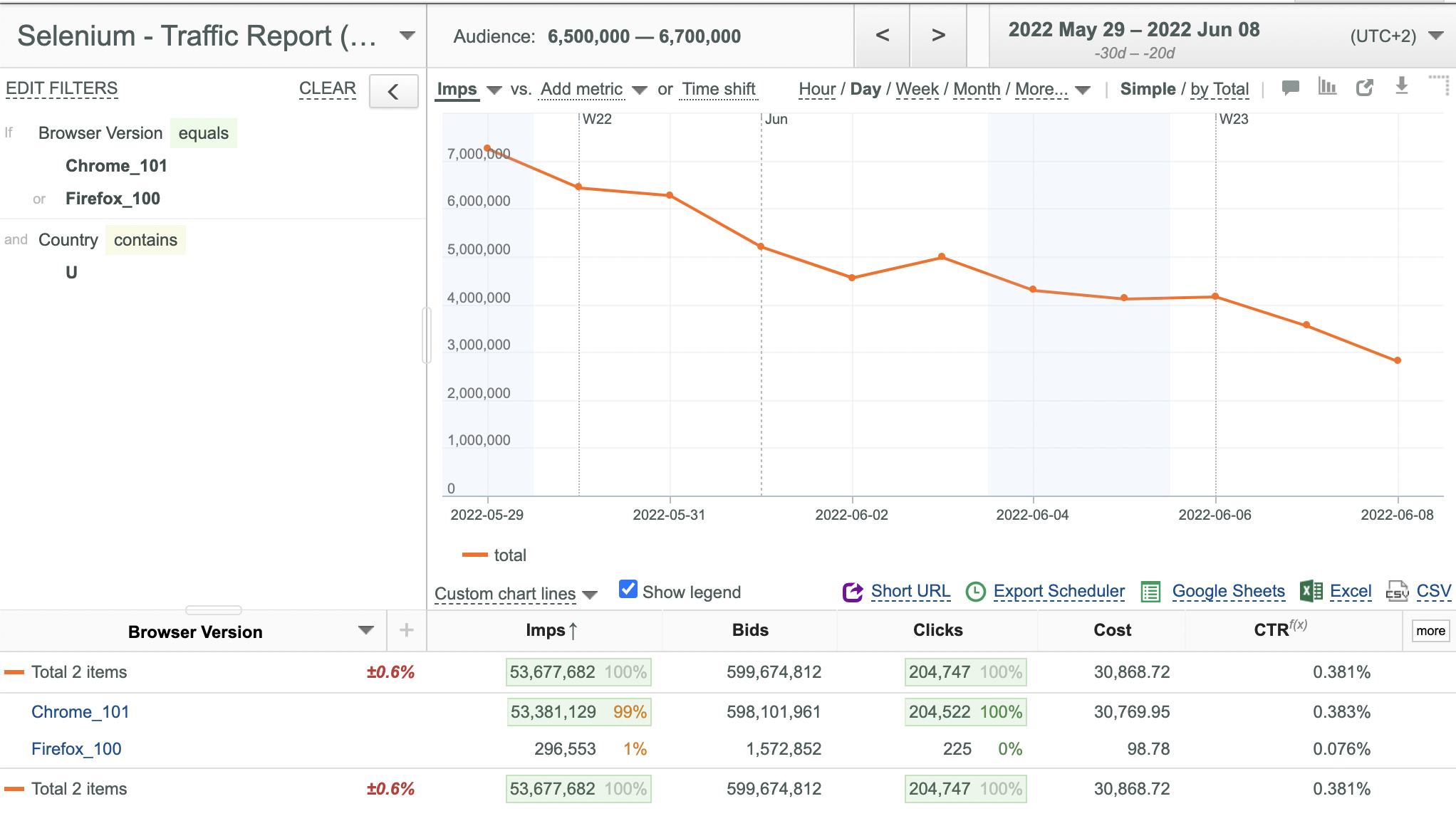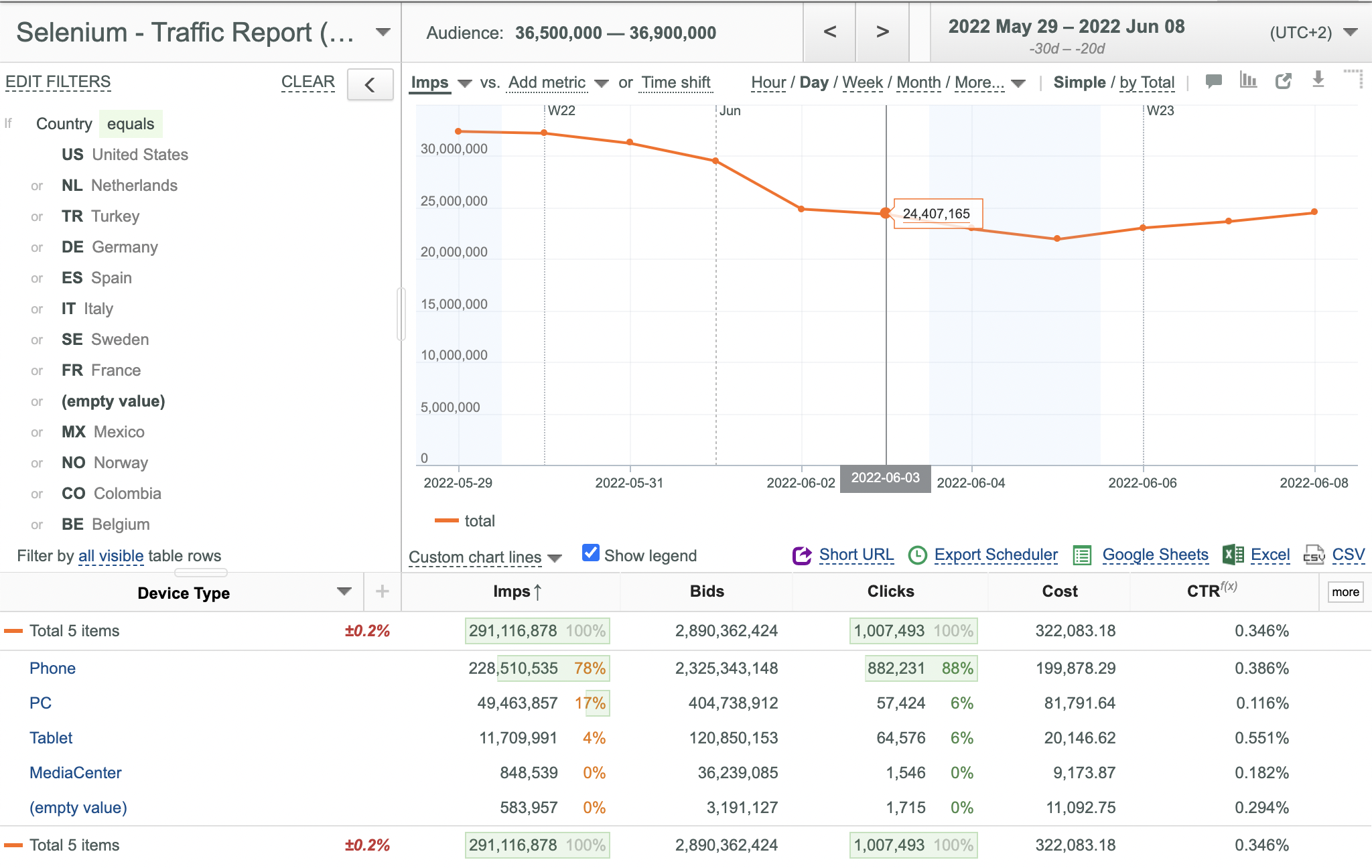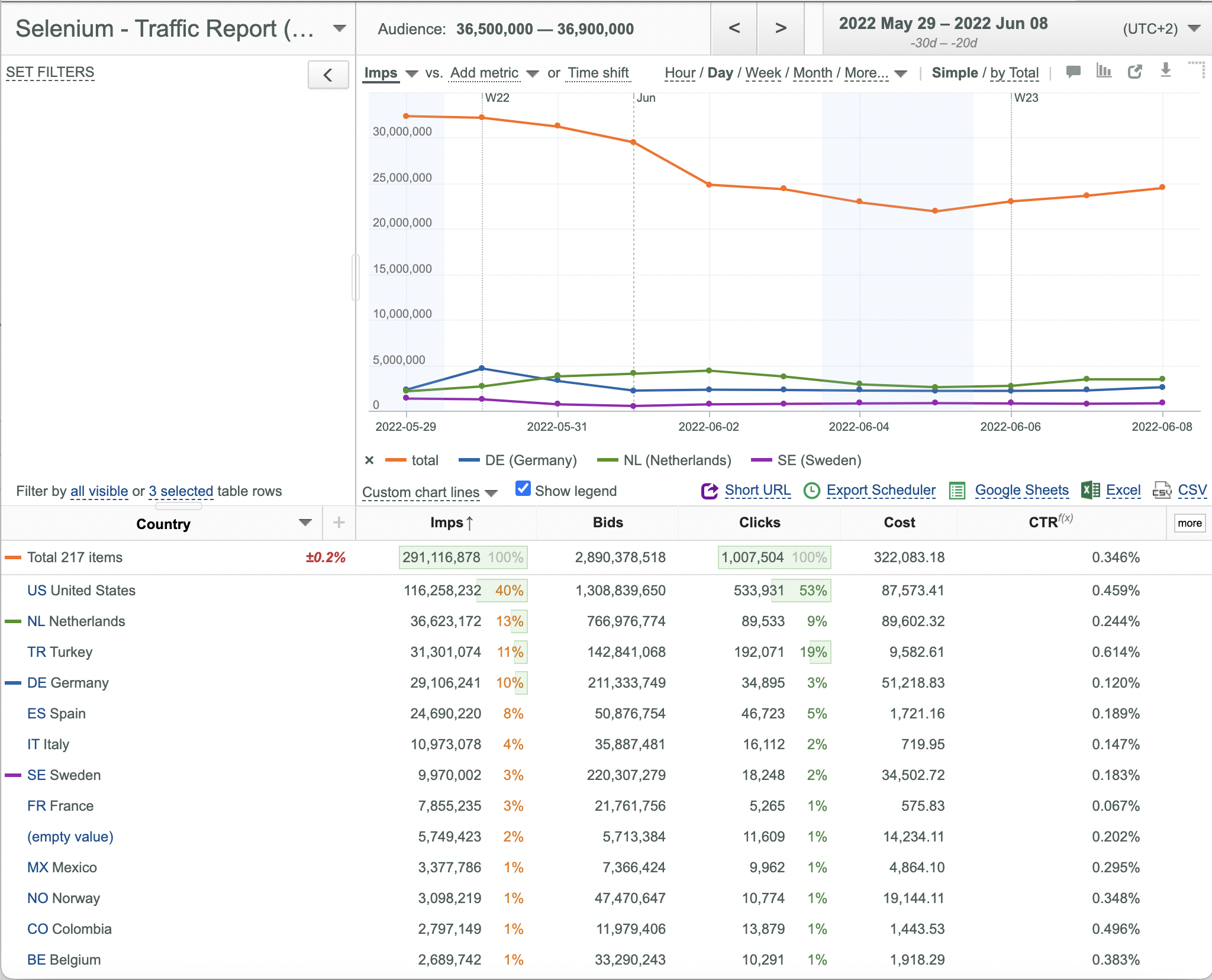Using the advanced filter
Opening the Advanced Filter Editor¶
To use the advanced filter:
- Click the Add filter button in the upper left corner. Advanced Filter Editor appears.
- The default key field in the first line always matches the last selected Category.
- Select the first desired key field from the appeared drop-down list, select the required match type ( equals and not equals for strict search or contains, not contains, begins with, ends with, not begins with and not ends with for fuzzy search) and enter the required key field values. The default match type is equals.
All match types support several key field values combined by the OR operator. To add a new key field value, click the corresponding 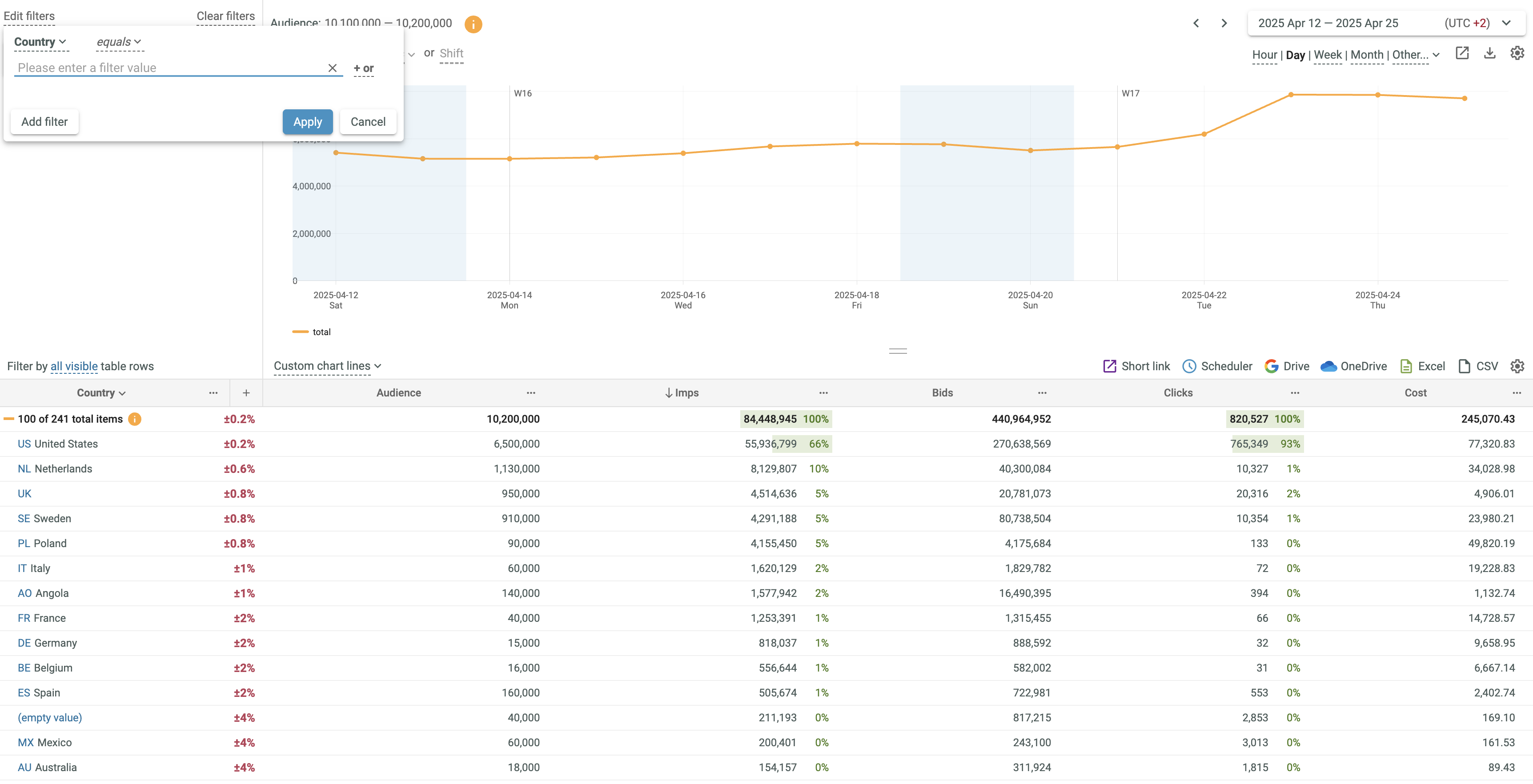 button to the right of the previous value and enter the new value into the appeared box.
button to the right of the previous value and enter the new value into the appeared box.
- If the number of key field values in the OR operator of the the advanced filter is greater than 100, then for any match type your search is performed by key field values only.
- If the number of key field values in the OR operator of the the advanced filter is less than or equal to 100, then for any match type ( equals, not equals, contains, not contains, begins with and ends with, not begins with and not ends with) your search is performed by both key field values and key field mappings. Therefore, if a particular search string exists simultaneously in a value and in the mapping of a different value, both rows are returned.
- If selected match type is contains, not contains, begins with, ends with, not begins with, not ends with and the number of rows to be returned is greater than 30,000, then the request is rejected, and the following error messages are displayed:
- Error while getting charts data. Filter for field 'key_field' with value 'value' matches too many mappings. Please, use a longer sequence.
- Error while getting table data: Filter for field 'key_field' with value 'value' matches too many mappings. Please, use a longer sequence
- If necessary, click the
 button below the last selected key field to add the next key field.
button below the last selected key field to add the next key field. - Repeat steps 2 and 3 for all required key fields.
- The default key field in the new line always matches the last selected key field.
- Each key field may be selected any number of times.
- Click the
 button to apply the selected filter and close the Advanced Filter Editor,
button to apply the selected filter and close the Advanced Filter Editor, - If any matches are found, all data rows matching the specified search criteria are selected and displayed. The corresponding new links are added to the Split Chain in the upper left corner.
- If no matches are found, no data is displayed and the following error message appears: There is no data available for selected parameters. Please readjust dates and/or split values. All new links are added to the Split Chain to allow the user to make the required corrections manually.
- To remove a certain key value from a paticular link, put your mouse pointer over the desired link and click the corresponding appeared
 button.
button. - To remove a particular link click the corresponding
 button.
button. - To remove the whole Split Chain, click the Clear filters link.
- To edit an existing Split Chain, click the corresponding
 button and make the required changes as described above.
button and make the required changes as described above.
Applying the Advanced Filter Directly to All Visible Key Field Values¶
You can apply the advanced filter directly to all visible key field values.
- Click the all visible link above the key column.
- See that the advanced filter is applied to all visible countries.
Applying the Advanced Filter Directly to the Key Field Values Matching the Currently Selected Plots¶
You can apply the advanced filter directly to the key field values matching the currently selected Plots (at least 2 Plots except Total should be selected).
- Select the desired Plots ( NL, DE and SE in this example).
- Click the 3 selected link appeared above the key column.
- See that the advanced filter is applied to the NL, DE and SE key field values.
Note 1: The following two special key field values are used in the search operation:
- "(empty string)" - means any number of spaces
- "(empty value)" - means null or undefined value
Note 2: Fuzzy search by the "(empty string)" and "(empty value)" key field values is supported only, if the whole value is specified. It is not possible to search by, for example, the "empty" value.
Note 3: Strict search by "(empty string)" is equivalent to strict search by 1 or more spaces.
